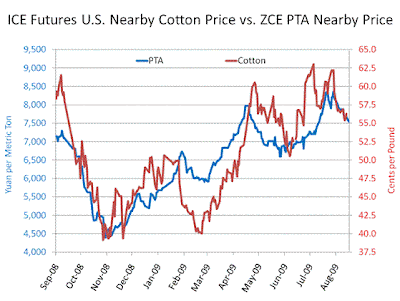
After retreating the previous week in response to overbought technical and fundamental signals, last week’s market posted an impressive rebound, but darkening fundamental clouds this week suggest prices may ease lower in coming days. The futures market jumped 260 points last week, driven higher by a near limit-up move Monday. This jump came in concert with a strong surge from most other key commodities, as the dollar fell to its weakest point this year. Prices Tuesday and Wednesday remained range-bound, only to see a re-strengthening dollar Thursday push futures lower. Spec buying Friday helped the market reach just below 62 cents per pound, the highest level in half a month, but profit taking Friday eased gains, with the week closing at 60.53, just below Tuesday’s close.
Looking to the new week, all eyes will turn to the forthcoming USDA supply and demand report due to be released Wednesday. We anticipate the USDA will turn more bearish in its next report, with looser fundamentals expected in the U.S. and worldwide. We look for the report to show a modest increase in the anticipated size of the U.S. harvest, as steady improvements in the condition of the crop across the cotton belt over the last month boost the outlook. Evidence shows half the U.S. crop is in good or excellent condition, up each of the last four weeks. After averaging 13.25 million bales each of the last three months, we look for the USDA to raise the production forecast to 13.6 million, as higher anticipated yields in the Midsouth and Southeast offset crop damage from exceptional drought conditions in South Texas.
We remain pessimistic toward the prospects for U.S. mill use in 2009/10. While economic activity is likely to rebound in the new marketing year, we are not confident that mill demand for cotton will remain essentially unchanged from the 3.55 million bales recorded this year. We look for continued consolidation in the industry—albeit at a slower pace—and expect the August forecast to ease modestly to 3.45 million bales.
Foreign demand for U.S. cotton is likely to ebb in the new marketing year, suggesting lower U.S. exports. Already, the combined volume of carryover sales and sales for 2009/10 is less than at this point in each of the last several marketing years, suggesting exports next season may be lower. We expect U.S. cotton to maintain its one-third share of global exports, implying shipments may stay roughly flat from July at 10.2 million bales in August. On balance, higher production and modestly lower demand for U.S. cotton is likely to boost anticipated ending stocks. We look for the USDA to revise its August projection for U.S. ending stocks for 2009/10 to 5.9 million bales. Even so, this would still remain the lowest in five years.
Worldwide, changes in global fundamentals are likely to mirror the expected changes in the U.S. We expect the USDA to modestly increase world cotton production, as improved prospects in the U.S. offset a dimming outlook in India. A lackluster monsoon here continues to sprinkle insufficient rains on most of the country, hindering crop development in a country that plants more land to cotton than any other. We look for the USDA’s August forecast to increase to just over 106.0 million bales.
Mill demand for cotton remains lacking in most of the world. After reducing its forecast in June and July, we believe the USDA forecast still remains overstated. While consumption may not dip as low as in 2008/09, we look for slower growth in 2009/10 than currently projected and expect the August forecast to ease for the third straight month, dipping another 600,000 bales to 112.0 million. Similar to the U.S., higher supply and lower demand forecasts imply higher ending stocks. At 58.5 million bales, our expectation would mark the third straight increase from the USDA and the third straight month of gradually looser fundamentals in the market.
The big news last week was the announcement that two of the world’s largest cotton merchants planned to merge, creating a cotton trading behemoth that would sell one in ten bales grown around the world. Thursday Allenberg Cotton Company confirmed rumors that it planned to acquire Dunavant Enterprises Inc. The deal could align two of the world’s leading cotton merchants into a behemoth organization responsible for marketing one in ten bales grown around the world. Cordova, Tennessee-based Allenberg, the largest in terms of both revenue and volume, oversees shipments of more than seven million bales U.S. and foreign growths, with revenues of roughly $2.0 billion. Privately-owned Dunavant handled six million bales last year, with revenues at roughly $1.5 billion. Together, the combined organization could market over thirteen million bales, or more than one-tenth of the global cotton crop.
 New York cotton futures finished their third straight week of declines on cues from outside markets, falling to the lowest weekly close in more than two months. This marked the third consecutive week of lower closes, the longest such streak since a four-week losing stretch that ended March 6.
New York cotton futures finished their third straight week of declines on cues from outside markets, falling to the lowest weekly close in more than two months. This marked the third consecutive week of lower closes, the longest such streak since a four-week losing stretch that ended March 6.

